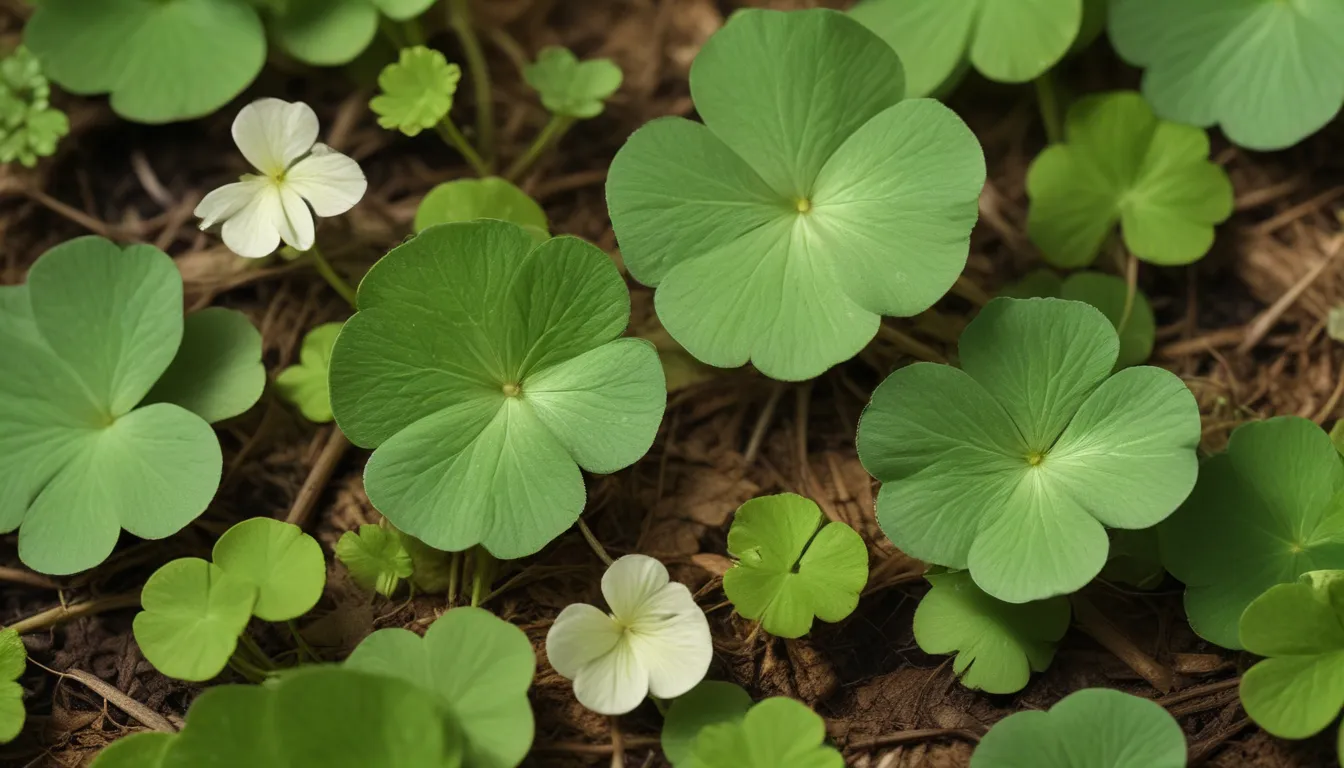The pictures we use in our articles might not show exactly what the words say. We choose these pictures to make you interested in reading more. The pictures work together with the words but don’t take their place. The words still tell you the important facts.
Are you ready to embark on a journey of discovery into the fascinating realm of wood sorrel? This unassuming plant, also known as oxalis, is a hidden gem waiting to be explored. Join us as we unravel 19 surprising facts about wood sorrel that will captivate your imagination and broaden your horizons. From its unique characteristics to its cultural significance and medicinal properties, there's so much to learn about this versatile plant. Let's dive in and unlock the secrets of wood sorrel!
The Diverse Wood Sorrel Family
Wood Sorrel leaves fold at night.
One intriguing feature of Wood Sorrel is its natural circadian rhythm, where its leaves fold up at night in a process known as nyctinasty. This behavior adds a touch of mystery to the plant's daily life cycle.
Wood Sorrel is edible.
Surprisingly, Wood Sorrel is not just a delight to the eyes but also a treat for the taste buds. Its lemony-flavored leaves can be used fresh in salads, as a garnish, or even as an ingredient in culinary creations.
Wood Sorrel flowers attract pollinators.
The vibrant flowers of Wood Sorrel, blooming in an array of colors like yellow, pink, purple, and white, serve as a beacon for bees, butterflies, and other pollinators with their nectar-rich blossoms. These blooms are not only visually appealing but also play a vital role in the ecosystem.
Wood Sorrel contains oxalic acid.
While Wood Sorrel is safe for consumption in moderate amounts, it's important to note that it contains oxalic acid. This compound lends a tangy taste to the plant but should be consumed mindfully to avoid any potential side effects.
Wood Sorrel can be used as a natural dye.
The leaves and stems of Wood Sorrel have a hidden talent – they can produce a lovely light yellow or green dye. This natural dye has been cherished by traditional artisans for centuries, adding a touch of nature's beauty to their craft.
Harnessing the Medicinal Benefits of Wood Sorrel
Wood Sorrel has medicinal properties.
In the realm of folk medicine, Wood Sorrel has been revered for its healing properties. From treating stomachaches and rheumatism to combating fevers and inflammation, this humble plant has played a significant role in traditional remedies.
Wood Sorrel is a hardy plant.
Adaptable and resilient, Wood Sorrel thrives in diverse environments, from forests to meadows and rocky terrain. Its ability to withstand varying soil conditions and climates makes it a versatile addition to any garden or landscape.
Wood Sorrel can be grown indoors.
For those lacking outdoor space, fret not – Wood Sorrel can be grown indoors in pots or containers. As long as it receives adequate sunlight and care, this plant can brighten up your indoor space with its beauty and charm.
Wood Sorrel is a symbol of good luck.
Embraced in some cultures as a symbol of good fortune, Wood Sorrel carries with it a touch of serendipity and positivity. Keeping this plant close may bring a sprinkling of luck into your life, according to traditional beliefs.
Wood Sorrel has inspired folklore and myths.
Steeped in centuries-old folklore and myths, Wood Sorrel has been connected to themes of luck, love, and protection against malevolent forces. Its rich history adds an aura of mystique to this botanical wonder.
Embracing the Culinary Delights of Wood Sorrel
Wood Sorrel is not related to clover.
Despite its visual resemblance to clover, Wood Sorrel belongs to a distinct plant family. Its unique characteristics and flavors set it apart, showcasing the diversity and complexity of the natural world.
Wood Sorrel is a natural weed repellent.
Harnessing its allelopathic properties, Wood Sorrel produces compounds that inhibit the growth of neighboring plants, serving as a natural deterrent against weeds and competing species. This unique trait highlights the plant's ecological significance.
Wood Sorrel leaves can be used as a natural remedy for insect bites.
The soothing compounds in Wood Sorrel leaves can provide relief from insect bites and stings, offering a natural remedy for skin irritations. This natural healing power adds to the plant's multifaceted benefits.
Wood Sorrel is a source of Vitamin C.
Packed with Vitamin C, Wood Sorrel leaves offer a nutritional boost to your diet. Enhance your immune system and overall health by incorporating this vitamin-rich plant into your meals.
Wood Sorrel has a unique way of spreading its seeds.
Bypassing conventional methods of seed dispersal, Wood Sorrel utilizes a built-in mechanism to fling its seeds away, ensuring the propagation of its species over a wide area. This ingenious strategy highlights the plant's evolutionary adaptability.
Unveiling the Wonders of Wood Sorrel and Oxalis
Wood sorrel and oxalis are intertwined in a tapestry of botanical marvels, each revealing a treasure trove of surprises and delights. As you delve deeper into the world of these enchanting plants, prepare to be amazed by their versatility, beauty, and significance. Let your curiosity guide you as you uncover the hidden wonders of wood sorrel and oxalis, celebrating the magic of nature in all its forms.
Conclusion
In conclusion, wood sorrel is a true gem of the natural world, offering a symphony of flavors, colors, and benefits to those who appreciate its beauty. From its culinary uses to its medicinal properties, this plant continues to enchant and inspire with its myriad talents. As you explore the intricate details of wood sorrel and oxalis, remember to cherish the rich history and cultural significance that surround these remarkable plants. Embrace the magic of wood sorrel and oxalis, and let their enchanting qualities brighten your world with wonder and awe.
FAQs
- Is wood sorrel safe to eat?
-
Yes, wood sorrel is generally safe to eat. However, consumption should be moderate due to its oxalic acid content.
-
Can I forage wood sorrel in the wild?
-
Absolutely! Wood sorrel can be found in various regions and is a popular choice for foraging enthusiasts.
-
Does wood sorrel have any medicinal properties?
-
Wood sorrel has a history of use in folk medicine for treating certain ailments, but it's advisable to consult a healthcare professional before using it medicinally.
-
Can I grow wood sorrel in my garden?
-
Yes, wood sorrel can thrive in garden settings with partial shade and well-drained soil, making it a versatile addition to any landscape.
-
Are there different varieties of wood sorrel?
- Indeed, there are several varieties of wood sorrel, each with its own unique characteristics and adaptations that showcase the plant's diversity.
Dive Deeper into the World of Wood Sorrel and Oxalis
Prepare to embark on a botanical adventure like no other as you unravel the mysteries of wood sorrel and its close relative, oxalis. Let the beauty of nature's wonders captivate your senses and ignite your imagination with every revelation. Explore the enchanting world of wood sorrel and oxalis, where the ordinary transforms into the extraordinary, and the mundane becomes magical. Embrace the awe-inspiring qualities of these remarkable plants and let their allure infuse your life with joy and wonder.






